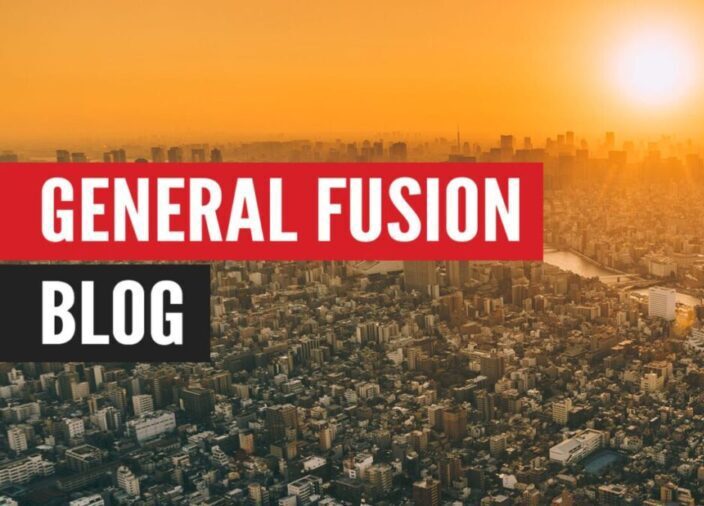By Christofer Mowry, Chief Executive Officer at General Fusion
Fusion is ubiquitous. Every ray of light that shines down on earth, that nurtures our gardens, that warms our world, has its source in the fusing heart of the sun. It is so elegantly simple. Stars are nothing more than giant spheres of hydrogen, heavy enough to push these most basic atoms together and transmute them into helium in the alchemy of fusion. And yet, the incredible elusiveness of emulating this simple feature of the natural world was fusion’s paradox, at least until now. Today, General Fusion and others are busy sculpting 21st century technology solutions from the elemental possibilities of fusion which surround us all.
The truth is that every form of energy people have ever known or ever used derives indirectly from fusion. Time, pressure and heat transform the product of plants’ photosynthesis of sunlight into fossil fuels. Traditional nuclear fission power is the undoing of heavy atoms formed in the universe’s ultimate fusion furnace – the supernova.
[vc_row][vc_column width=’1/2′]The breezes moving wind turbines are created by temperature differences in the atmosphere caused by the sun’s heat. And, of course, solar power simply converts the sun’s fusion power into electricity, albeit intermittently at relatively low efficiency. The pursuit of practical fusion is the search for direct access to the source of all this energy.
[/vc_column][vc_column width=’1/2′][blockquote text=”The pursuit of practical fusion is the search for direct access to the source of all this energy.” text_color=”#ffffff” width=”100″ line_height=”undefined” background_color=”#444444″ border_color=”” show_quote_icon=”yes” quote_icon_color=”#ffffff”]
[/vc_column][/vc_row]
Fundamentally, all that the process of fusion needs is pressure, lots of pressure. The sun’s core experiences a pressure of more than 250 billion atmospheres. Under these conditions, the nuclei of a hydrogen atom have enough speed to overcome their mutual repulsion and get close enough together to allow the strong nuclear force to bind them into a helium nucleus. The weight of each helium nucleus is slightly less than the weight of the two hydrogen nuclei from which it formed. This little bit of excess mass is transformed into an immense amount of energy, proportional to the square of the speed of light as Einstein so eloquently articulated. It’s as simple as that. Just pressure and hydrogen.
The world has been working to replicate this simple process, the fusion reaction, for more than half a century. Why was it so hard to make fusion happen on earth? The answer is that 20th century technology was not able to maintain hydrogen at 250 billion atmospheres for very long, certainly not under the steady-state conditions at the core of the sun. Researchers used the available technologies of the time and tried to make fusion happen by substituting higher temperatures or by creating momentary pulses of star-like conditions. At 150 million degrees, instead of the 15 million degrees at the center of the sun, fusion occurs at pressures 1000 times less dense than the air we breathe. The challenge was figuring out how to contain hydrogen plasma at this temperature for long periods of time and how to make the container survive these conditions. Powerful lasers were able to compress hydrogen to the requisite star-like conditions, but only for a nanosecond. Learning how to focus and align an incredibly short, symmetric pulse of laser beams around a very small hydrogen target was also equally elusive.
But science is persistent and technologies improve. The threshold of break-even equivalent fusion performance was crossed in Japan as the 20th century passed into history (see footnote). Today, more than 24 private fusion ventures are marshalling new 21st century technologies to innovate ever more practical solutions to the paradox of fusion. Hydrogen plasma pressures an order of magnitude higher can be achieved with new superconducting magnets, reducing the size and cost of steady-state fusion machines. And, here at General Fusion, we are perfecting a hybrid solution which seeks to combine the best of the high temperature steady-state and pulsed high-pressure fusion processes to unlock practical fusion energy, producing millisecond bursts of power that are easier to create and manage. We all look up to the sun and realize that fusion works and that inspires confidence that we can successfully emulate this greatest of all forms of energy.
Footnote: The Japanese JT-60U tokamak achieved the record for extrapolated break-even in 1998. Extrapolated break-even means that had deuterium-tritium fuel been used (rather than the straight deuterium used in research) the fusion energy output of the machine would have exceeded the power put into the plasma.
This article first appeared in the March 2019 edition of General Fusion’s quarterly newsletter. Subscribe here to receive the next edition.

